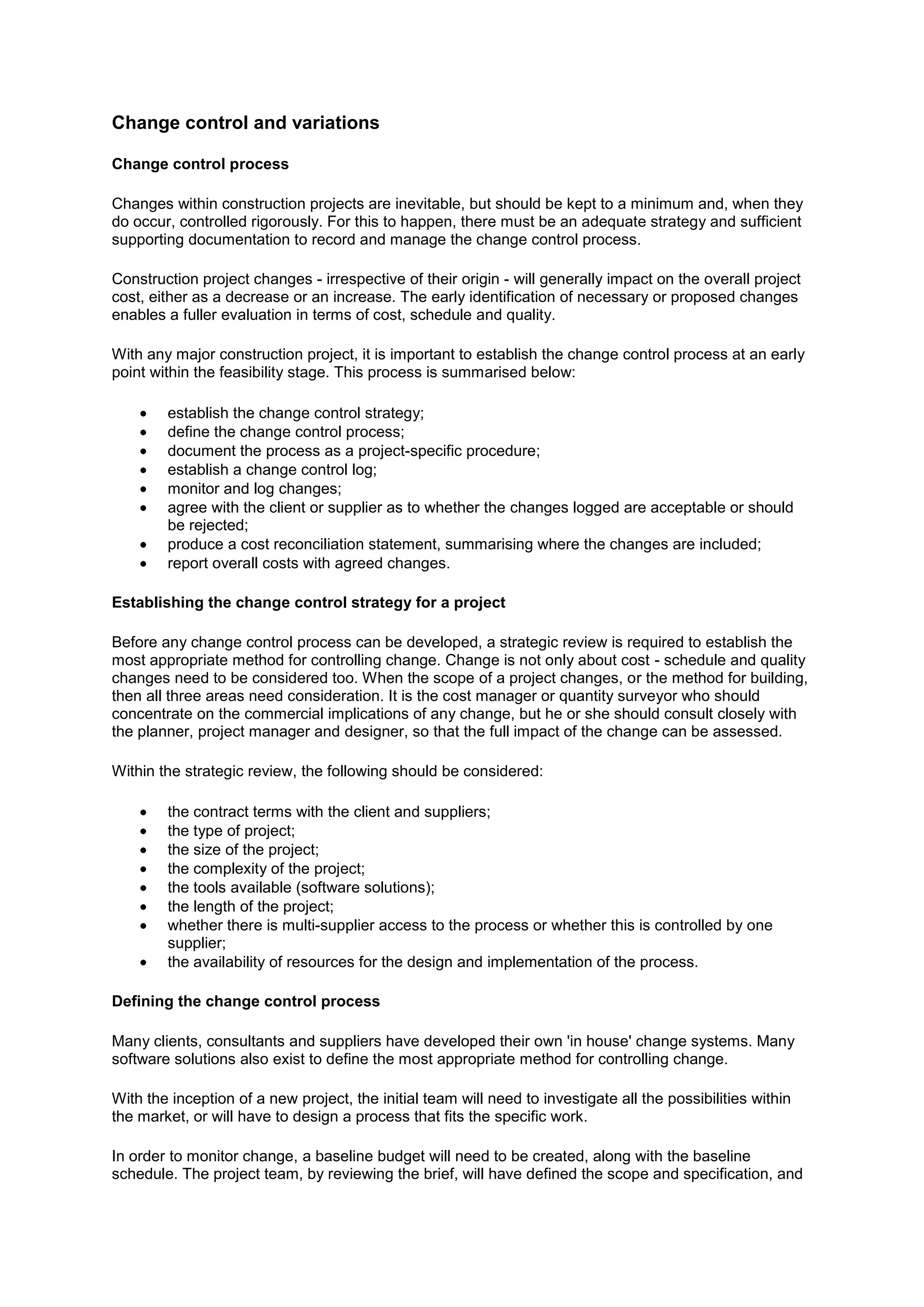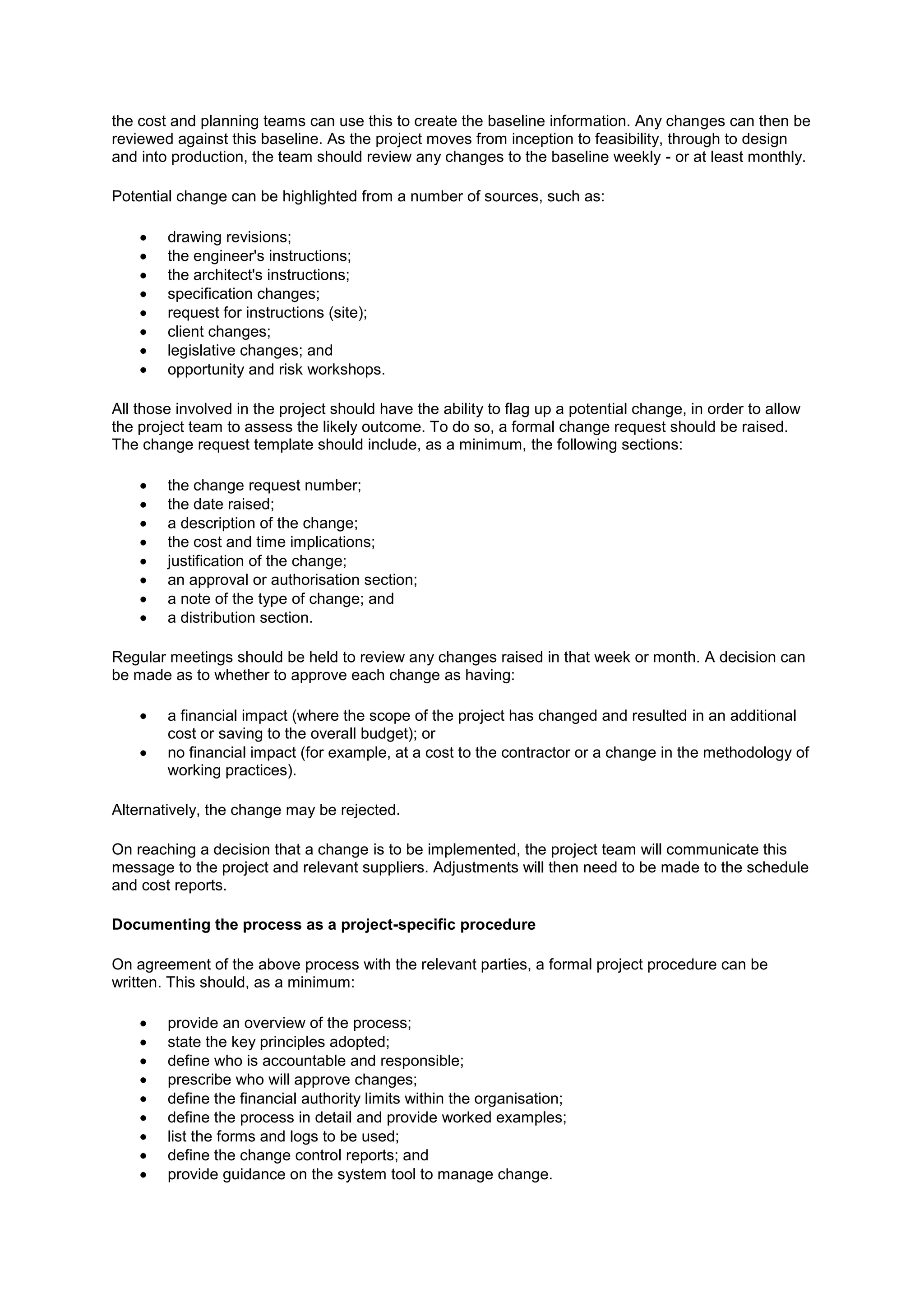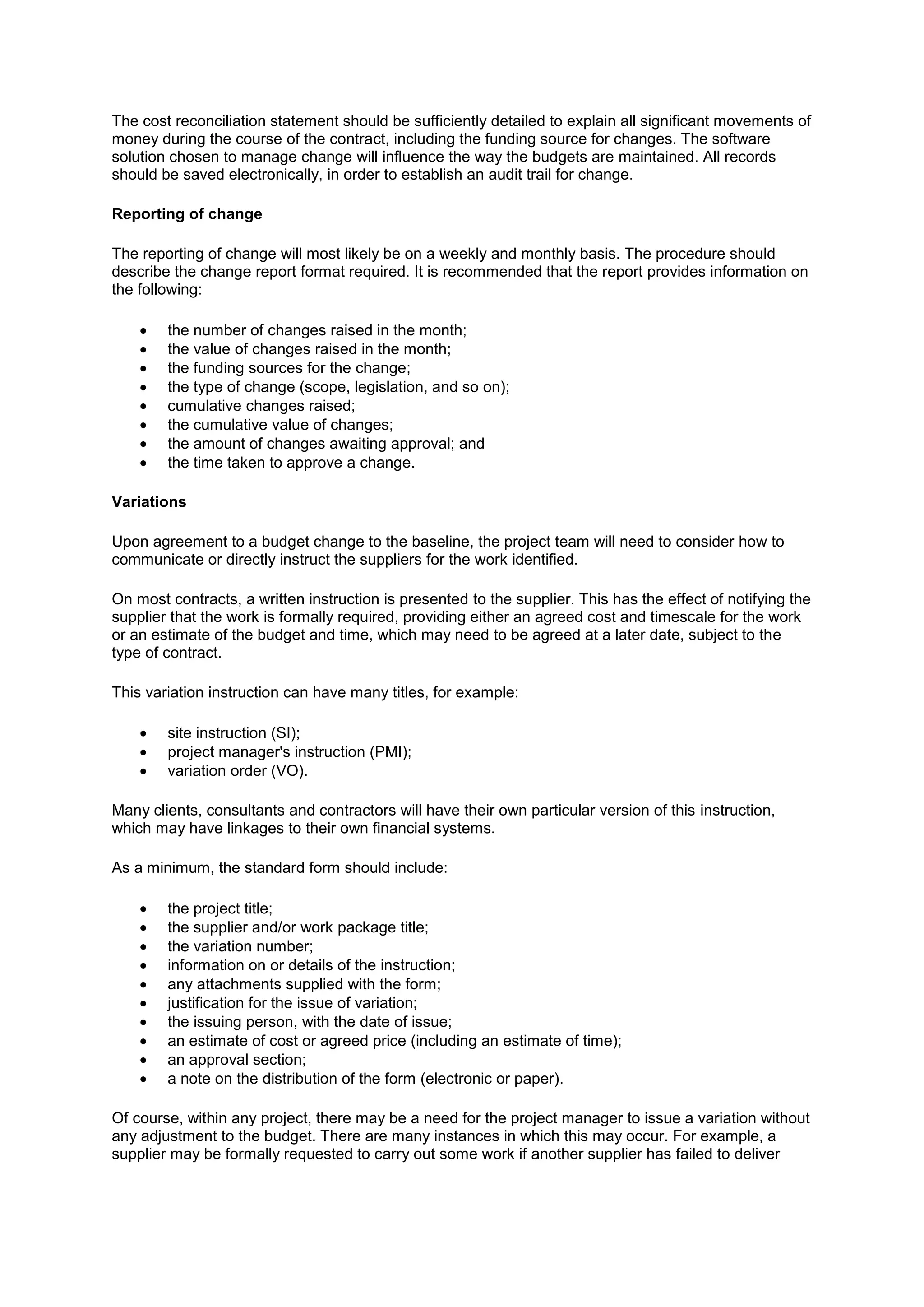The document discusses establishing an effective change control process for construction projects. It emphasizes that changes should be minimized but rigorously controlled. It outlines establishing a change control strategy early, defining the process, documenting it, establishing a log to track changes, agreeing whether changes are acceptable, and reporting costs with agreed changes. The key aspects of the change control process are defining the baseline, tracking changes, approving or rejecting changes, adjusting budgets and schedules, and reporting on changes regularly.


![Establishing a change control log
The change control log should, as a minimum, consist of the items indicated in the table below.
Change control log:
[Project name]
CO Date Description of Cost Cost Latest date for
Action Comments
No. raised change estimate status action
Total
This log should be maintained so that an updated copy can be produced at the regular change control
meetings and a total liability for change assessed.
The 'cost status' shown in the table above will indicate whether the change has been approved or
rejected.
The approved costs will be added to the baseline budget and a current control budget will be
produced, indicating the total liability to the client of the changes raised to date.
Agreeing status of change - approve or reject
The project team will be required to approve or reject each change formally logged within the process.
If a change is rejected, there may be a requirement for the team to review an alternative proposal,
rework the design or change the method of working.
If a change is approved, then the funding of the change will need to be considered. This usually
follows three main routes:
fund the change from contingency (see Risk and opportunity below);
fund the change by budget transfers from within the project; or
fund the change from a third party.
Risk and opportunity
Within any project, the team will be required to review the initial risks and opportunities during the
early stages of development. Once these have been identified and approved by the client, an
assessment of the contingency levels can be made. On agreement of the contingency amount for the
project, this can be included as a fund for potential changes from within the cost report.
There needs to be a clear understanding within the project team as to how the contingency fund will
be affected by any changes raised. A mechanism needs to be defined that allows funds to be
allocated for scope change or even growth (inflation), as the project proceeds.
Cost reconciliation statement](https://image.slidesharecdn.com/changecontrolandvariations-130227003547-phpapp02/75/Change-control-and-variations-3-2048.jpg)

